Side Effects Of Hair Straightening You Should Be Aware Of
Artificially straightened hair may come at a cost heftier than what you paid at the salon for the process.

Image: Shutterstock
The hair styling field is ablaze with new treatments and procedures for taming curls and unruly hair and giving you pin-straight hair. However, is it worthwhile to subject your hair to dangerous chemicals? Did you know there are multiple side effects of hair straightening? Yes, this simple treatment can do serious harm to your hair.
Hair straightening, either done professionally with a chemical treatment or at home with a hair straightener, has several side effects that can ruin your tresses. So, before you go for a hair straightening service, take a look at this list of adverse effects. Take a peek around.
In This Article
Types Of Hair Straightening
There are several methods for achieving sleek, straight hair, each with its own unique characteristics.
- Flat Iron: A classic method in which heated plates are used to straighten the hair by clamping and sliding through sections. It offers precision but can be damaging if not used carefully.
- Chemical Straightening: This permanently alters the hair’s structure. It employs relaxers, which break down hair bonds, and Japanese straightening, which restructures them. These treatments provide long-lasting results but require professional guidance for application and maintenance.
- Keratin Hair Treatment: A temporary option that uses a protein-based formula to relax curls and reduce frizz.
- Hot Comb Straightening: It involves using a heated metal comb to straighten the hair and is often used on afro-textured hair.
Each hair straightening method comes with its own set of benefits and challenges. Learn more about their potential side effects below.
What Are The Side Effects Of Hair Straightening?
The side effects of permanent hair straightening and the straightening you do at home are many, ranging from something as minor as dullness to dry hair to something as major as hair loss (1).
According to a recent study released by NIH, women who used chemical products for hair straightening run a significantly higher risk of uterine cancer. The study was conducted on 33,497 US women who were observed for about 11 years and it was found that women using chemical hair straightening products were 4.05% more likely to develop uterine cancer.
1. Dryness
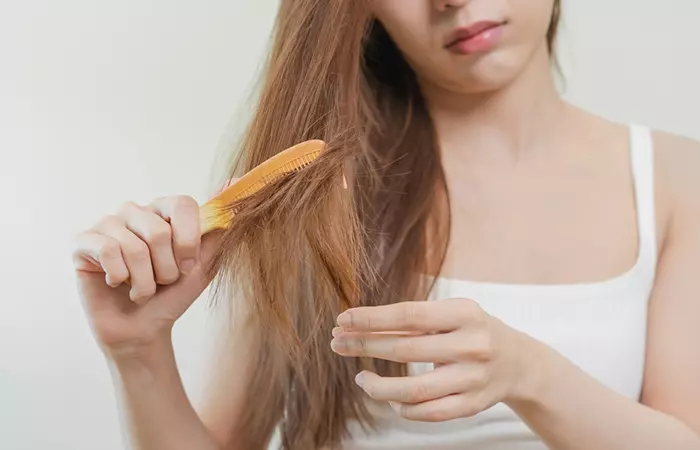
Have you ever noticed smoke rising out of your hair when you are straightening it? Well, that’s not smoke; it’s actually steam. A straightening iron works by seeping all the moisture out of your hair to straighten it and secure the style in place. And the only way that the moisture from your hair can escape is by evaporating and turning into steam. This is why your hair goes back to its natural state after you wash it because moisture is restored into it.
According to Dr. K. Harish Kumar, MD, DVL, using heat styling tools and chemical treatments regularly over a long period can rob your hair of its natural oils and make it extremely dry and brittle.
2. Frizz
So you thought straightening your hair was the ultimate way to get rid of all your hair frizz, huh? Well, unfortunately, hair straightening, in this case, is quite counter-intuitive (1). This is because the dryness caused by frequently straightening your hair ultimately leads to more frizz, not less.
3. Breakage
Temporary and permanent hair straightening at home or otherwise can lead to excessive dryness and brittle hair, it is safe to say that they weaken the structure of your hair strands (1). Thus, the individual strands of your hair become more susceptible to breaking right from the middle.
4. Split Ends
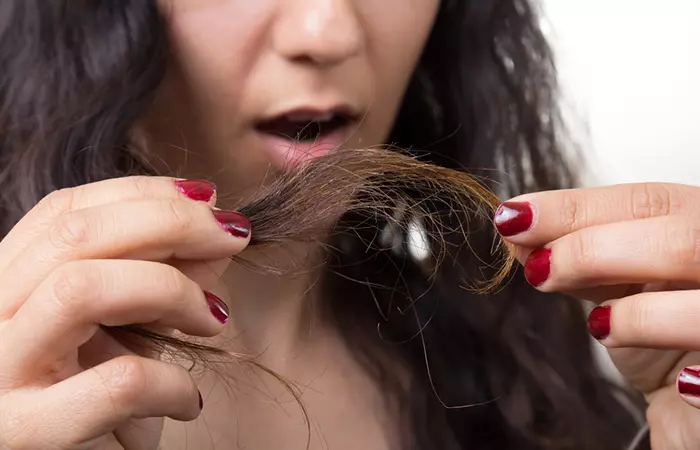
Split ends are usually formed when your weakened hair starts breaking from the middle (1). Besides being a clear indication of the fragile state of your hair, they also make your tresses look unsightly.
Michelle Govindasamy, an IT professional and a blogger, shared her experience of stopping the usage of hair straighteners and its effect on her hair. She wrote, “After about 6 months of no straightener I remember looking at my ends one day and I could hardly spot a split end. I definitely had way less split ends than ever before (i).”
 Quick Tip
Quick Tip5. Dullness
The natural oils from your scalp and the moisture in your hair are responsible for the beautiful, healthy shine of your hair (1). When you rob your locks of these two components through straightening, all you are left with are lifeless, dull hair.
6. Hair Fall
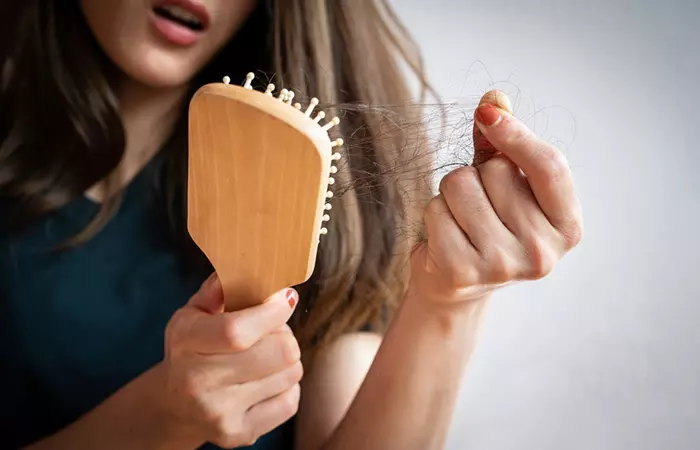
Applying heat on a regular basis damages not only your hair but also the hair follicles (1). The chemicals used in permanent hair straightening also unleash untold damage on your roots. And what happens when you have weak roots? Your hair starts falling out and may also result in thinning hair.
7. Permanent Hair Loss
If you think that you can straighten your hair for years and restore its health by simply putting away your straightening iron one fine day, you are gravely mistaken. Repeatedly using chemical relaxants and heat styling tools can kill your hair follicles and cause permanent hair loss (1).
8. Itchy Scalp
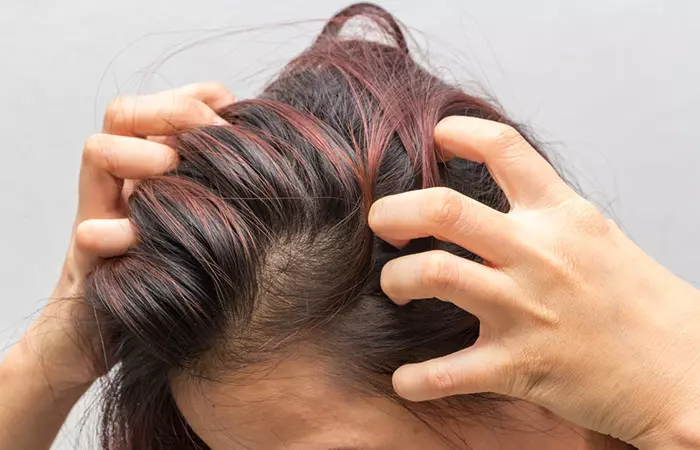
The death of your hair follicles also leads to underproduction of the natural oils that keep your scalp moisturized. This, in turn, leads to dryness, flaking, and itchiness on your scalp that can even spread to your forehead and neck.
9. Hair Texture Altered Permanently
The chemical agents used in permanent hair straightening can cause unwanted texture change. It can alter the texture of your hair permanently (1). No amount of hair care remedies and hair masks can help you regain your naturally healthy hair strands. Your only option at the point would be to grow your natural hair out completely.
10. Slower Hair Growth
Straightening your hair frequently without using a proper heat protectant can damage your hair cuticles permanently, leading to slower hair growth (1).
11. Regrowth Of Unsightly Roots
You know what’s worse than permanently straightening your hair? Waiting for it to grow out. Your roots (quite obviously!) grow out in their natural texture, leaving you with wavy/curly hair on top and straight hair at the bottom.
12. Itchiness On Your Body
Some hair smoothening products that you apply before straightening your hair release formaldehyde gas when they come in contact with heat (2), (3). Besides scalp irritation, the repeated exposure to this potent gas can cause irritation to your skin, nose, eyes, and lungs. It may also cause asthma (4).
13. Allergic Reaction
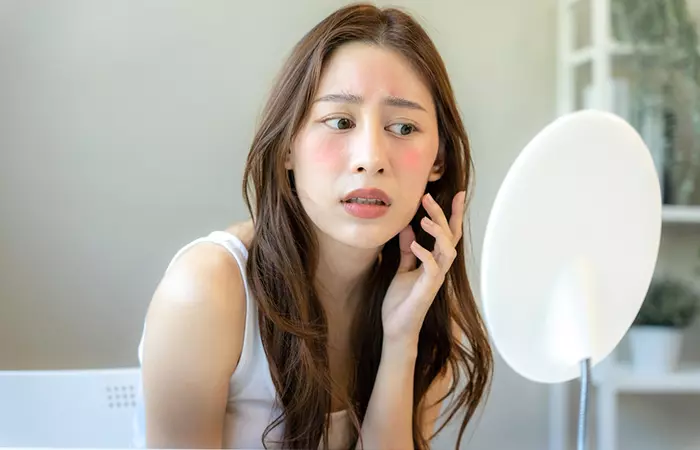
You could, unknowingly, be allergic to the chemicals used in permanent hair straightening treatments. The allergic reactions to these chemicals can occur immediately after the treatment or a few days later and can cause irritation on your scalp and skin, rashes, redness, inflammation, and irritation in your eyes.
The side effects of hair straightening sound ghastly. But it’s understandable if you don’t want to forego straightening your hair completely. Here are a few precautions that you can take to avoid the side effects of hair straightening.
How To Avoid The Side Effects Of Hair Straightening
- Always apply a heat protectant to your hair before straightening it to prevent it from getting completely fried by your straightener or other chemical burns.
- Try to limit straightening your hair to just twice a week. Avoid doing it daily, at all costs.
- Use your straightening iron on a low or medium temperature setting.
- Never straighten your hair when it is wet, as that is when it is at its weakest and most prone to breakage (1).
- Oil your hair and use a conditioner every time you wash it to restore the moisture into it. You could also deep condition your hair every two weeks to provide some intense hydration to it (1).
- Apply natural hair masks made of yogurt, coconut milk, honey, and olive oil every other week to moisturize your hair naturally.
- Rinse your hair with apple cider vinegar (two tablespoons of ACV mixed in a cup of water) to restore its lost shine.
 Quick Tip
Quick TipInfographic: Mistakes To Avoid While Straightening Your Hair
Hair straightening can cause hair damage and lead to hair breakage and loss. The main causes of these issues are the high heat, wrong technique, and chemical agents used in the process. However, you can prevent a few of these problems by avoiding common mistakes and straightening your hair the right way. Check out the infographic below to know more. Illustration: StyleCraze Design Team
Straightening your hair with chemicals or heat will undoubtedly damage your strands, leading to splits, breakage, dryness, frizz, and many more side effects. The chemicals may also leave you with scalp burns. And if you have curly hair, constantly straightening your hair ruins your lovely curl structure. In some cases, it may also leave you with serious hairfall. Thankfully, there are some simple tips you can try to keep your hair healthy and damage-free, such as using a heat protectant and reducing how often you straighten your hair.
Frequently Asked Questions
Is it OK to straighten hair once a month?
Madison Dufour says, “Straightening hair once a month is extremely acceptable and safe for the hair, as long as there is a heat-protectant product on the hair. If the hair is straightened with a temperature too high and doesn’t have the protectant, even once a month or infrequent straightening can’t repair burned hair.”
Does your hair go back to normal after you straighten it?
According to Dufou, “Yes. Temporarily straightening the hair with a flat iron or blow dryer will last until the hair is washed again or affected by humidity.” She adds, “Permanent straightening chemically reforms bonds made within the strand itself. But it does not change the bonds formed in new hair growing from the follicle out of the scalp. However, permanently straightened hair stays straight after washing and the only safe way to have curly hair again is to cut the chemically straightened hair off.”
What does chemical straightening do to your hair?
Chemical straightening breaks the disulfide bonds of your hair and resets them in a straight alignment to straighten your hair.
Can I color my hair after permanently straightening it?
Yes, you can color your hair after straightening it, but it’s best to wait a few weeks to give your hair time to recover from the chemical straightening process.
How long does the permanent hair straightening last?
Permanent hair straightening technically lasts forever. However, you will need to get it straightened again when your roots have visibly grown out, which could take around 6 to 9 months.
What is the safest way to straighten hair?
Straightening your hair without using harmful chemicals and heat is the best way to go about it. It also helps you avoid any hair damage.
Is straightening good for thin hair?
Thin and fine hair can also get damaged with straightening. Also, permanent hair straightening is not a good option if you have thin hair.
Key Takeaways
- Hair loss, split ends, and breakage may occur due to hair straightening.
- The hair may become dry and brittle by exposure to intense heat during hair straightening.
- The chemicals used in hair straightening may irritate the scalp, and cause itching and discomfort.
- It might be challenging to restore hair to its original texture and color after straightening and even lead to permanent damage.
- It is advisable to limit hair straightening to twice a week.
Illustration: Side Effects Of Hair Straightening You Should Be Aware Of
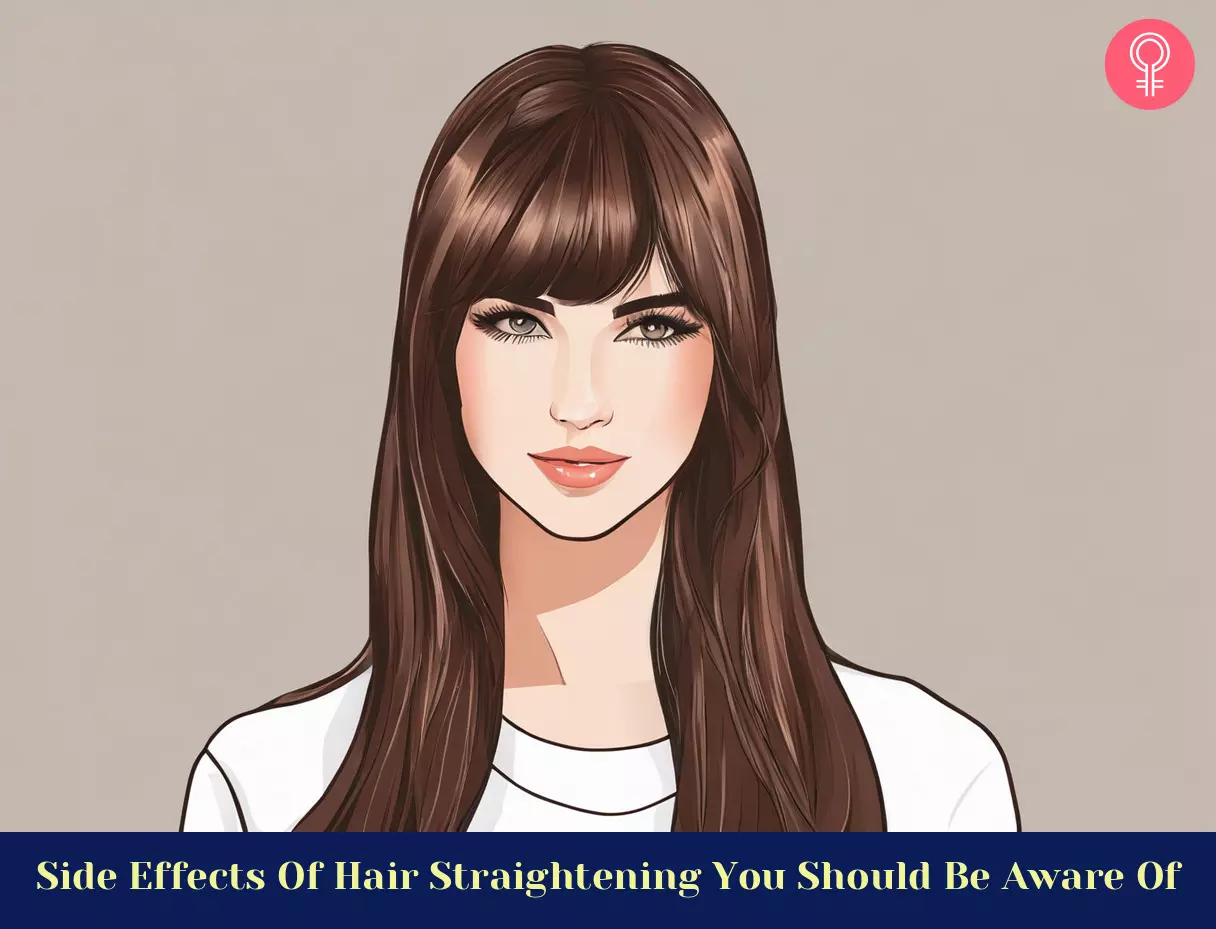
Image: Stable Diffusion/StyleCraze Design Team
Are you considering hair straightening? Learn about potential side effects you should know about hair straightening in this video. Go, take a look at it!
Personal Experience: Source
StyleCraze's articles are interwoven with authentic personal narratives that provide depth and resonance to our content. Below are the sources of the personal accounts referenced in this article.
i. I stopped straightening my hair & here’s what happened :)https://beautynthebronzer.wordpress.com/2018/08/03/i-stopped-straightening-my-hair-heres-what-happened/
References
Articles on StyleCraze are backed by verified information from peer-reviewed and academic research papers, reputed organizations, research institutions, and medical associations to ensure accuracy and relevance. Read our editorial policy to learn more.
- Hair Cosmetics: An Overview, International Journal Of Trichology, US National Library Of Medicine, National Institutes of Health.
https://www.ncbi.nlm.nih.gov/pmc/articles/PMC4387693/ - Hair Smoothing Products That Could Release Formaldehyde, Occupational Health And Safety Administration, United States Department Of Labour.
https://www.osha.gov/formaldehyde - Elevated formaldehyde concentration in “Brazilian keratin type” hair-straightening products: a cross-sectional study. Journal of the American Academy of Dermatology, US National Library Of Medicine, National Institutes of Health.
https://pubmed.ncbi.nlm.nih.gov/24332313/ - Asthma from hair straightening treatment containing formaldehyde: Two cases and a review of the literature. Toxicology and Industrial Health, US National Library Of Medicine, National Institutes of Health.
https://pubmed.ncbi.nlm.nih.gov/29554820/
Read full bio of Dr. K. Harish Kumar
- Madison Dufour is a licensed barber and cosmetologist with a decade of experience. She is also an entrepreneur who runs several hair businesses, including MadisonD Barbering and The Exquisite Find Hair Blog. She received her training from Xenon Academy of Cosmetology and aims to help people feel confident from the inside and beautiful on the outside through proper hair care.
 Madison Dufour is a licensed barber and cosmetologist with a decade of experience. She is also an entrepreneur who runs several hair businesses, including MadisonD Barbering and The Exquisite Find Hair Blog. She received her training from Xenon Academy of Cosmetology and aims to help people feel confident from the inside and beautiful on the outside through proper hair care.
Madison Dufour is a licensed barber and cosmetologist with a decade of experience. She is also an entrepreneur who runs several hair businesses, including MadisonD Barbering and The Exquisite Find Hair Blog. She received her training from Xenon Academy of Cosmetology and aims to help people feel confident from the inside and beautiful on the outside through proper hair care.
Read full bio of Ramona Sinha
Read full bio of Monomita Chakraborty





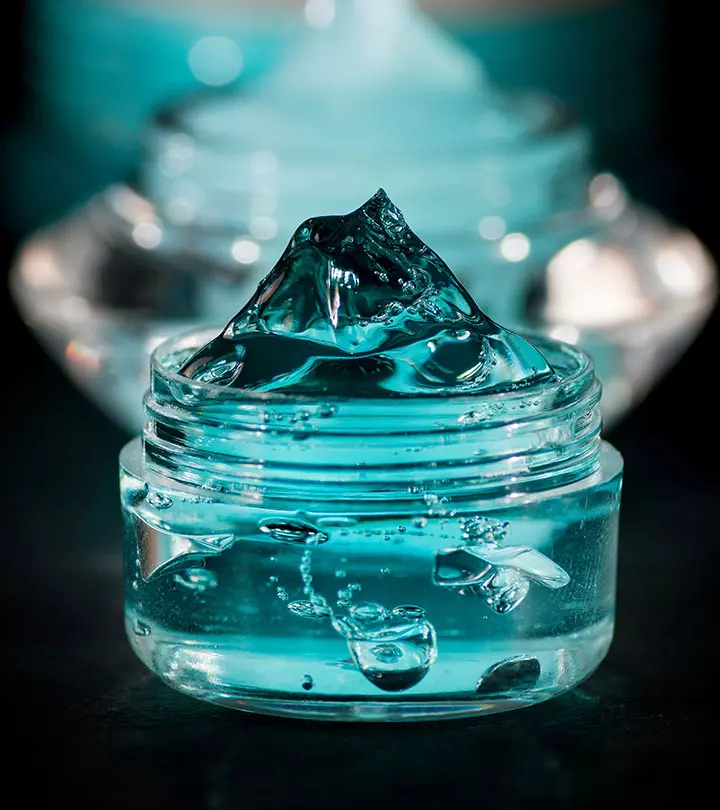
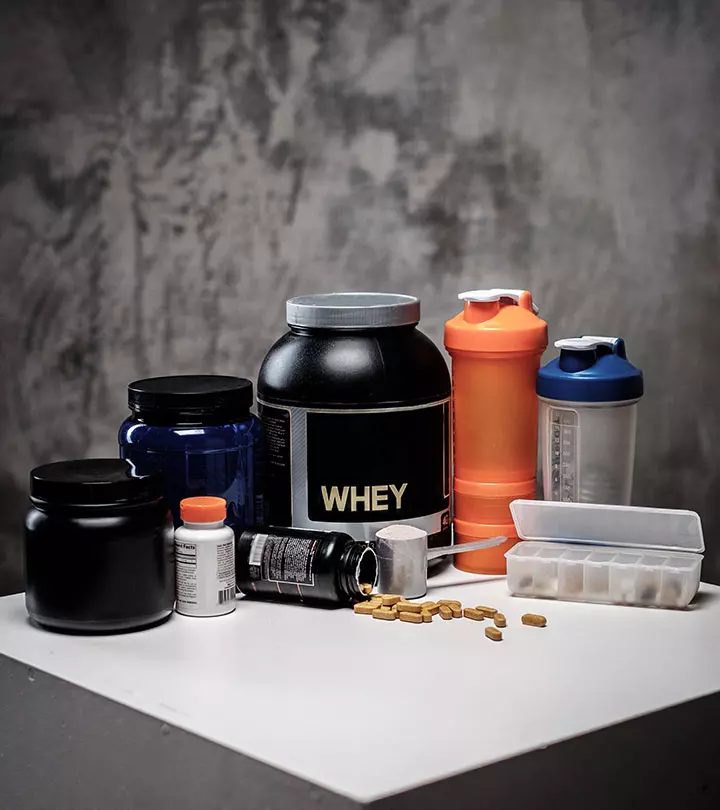


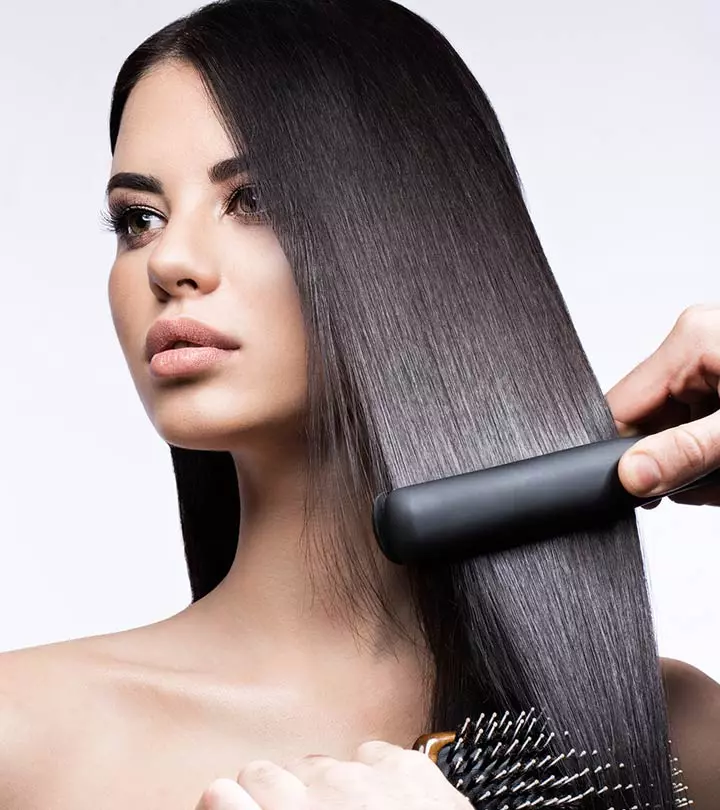




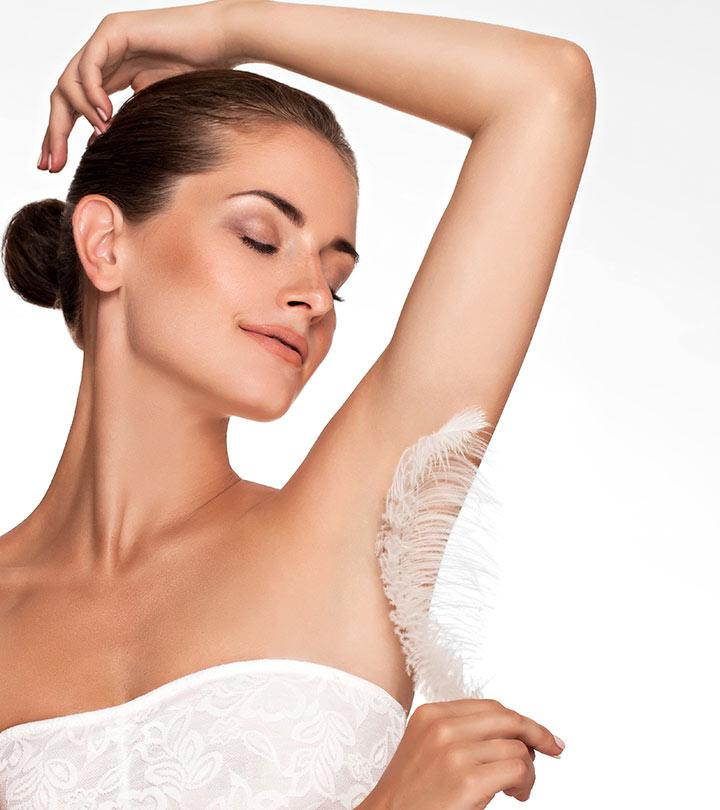

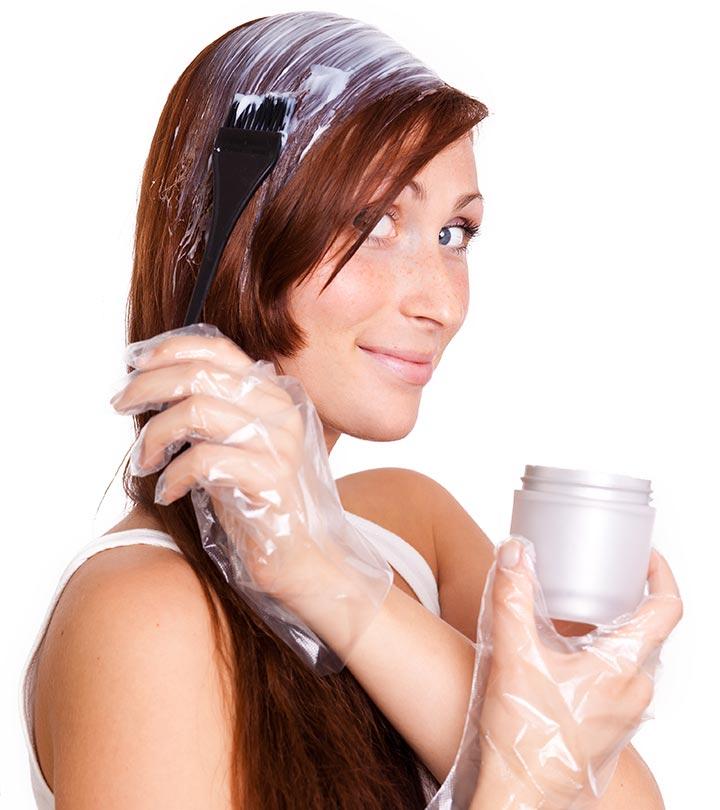
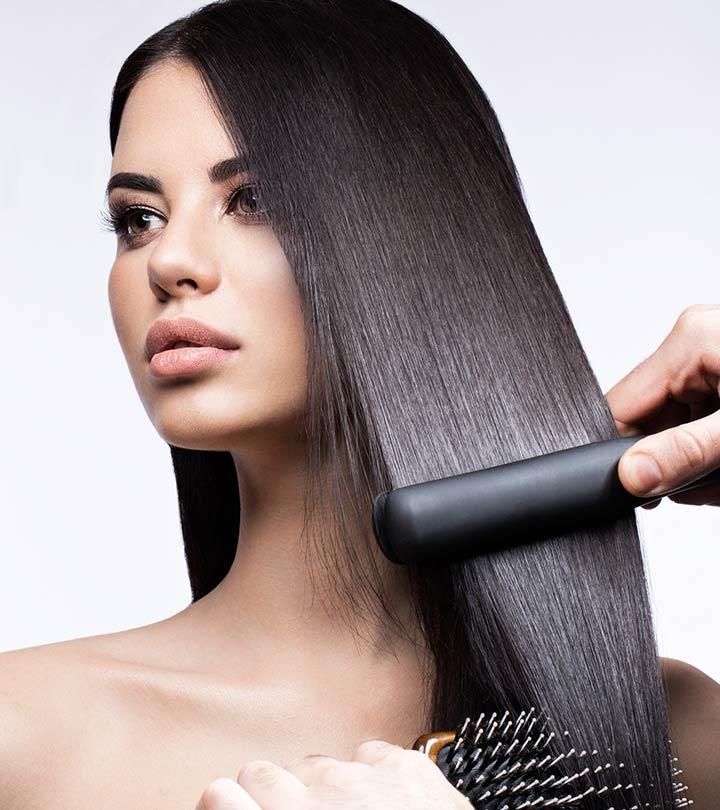
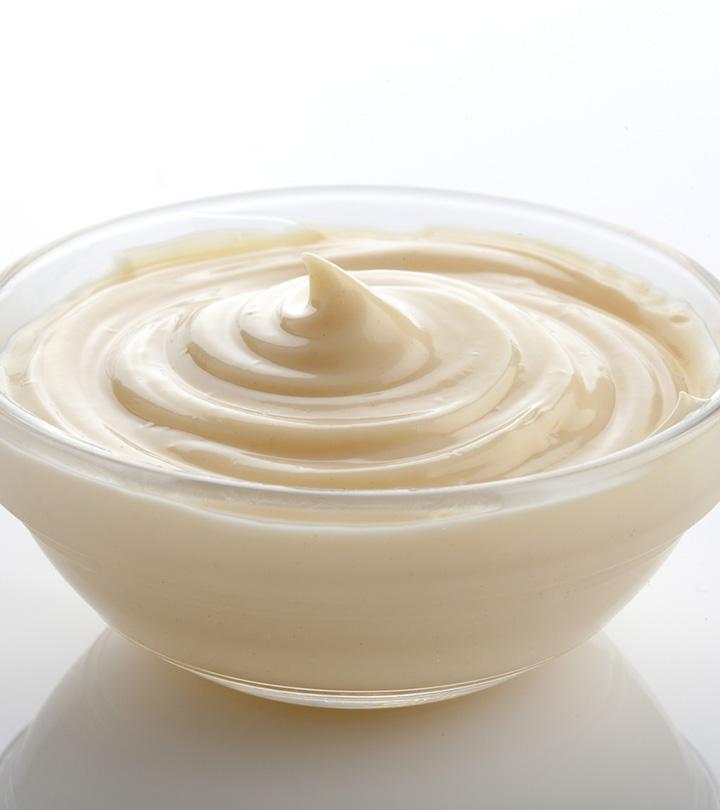
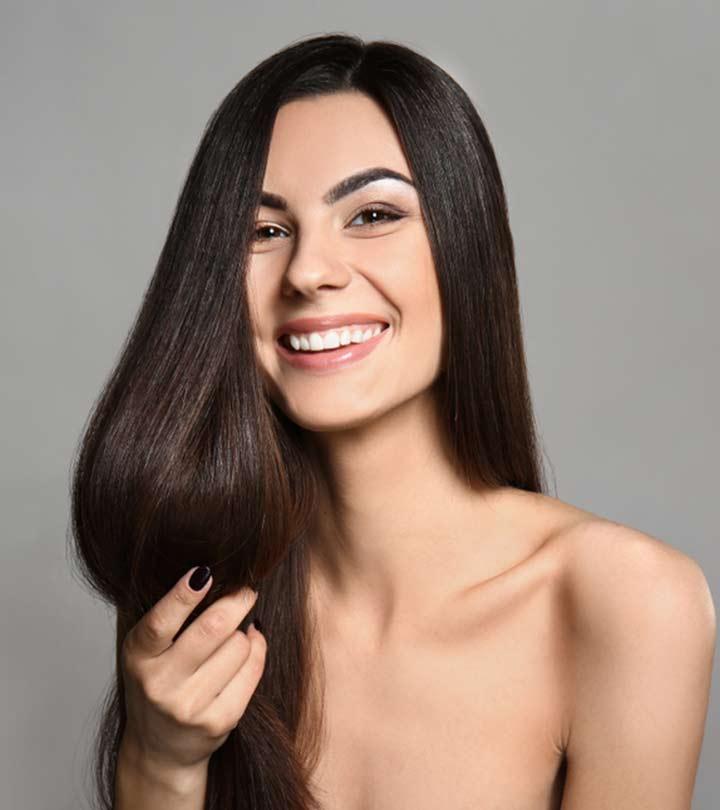
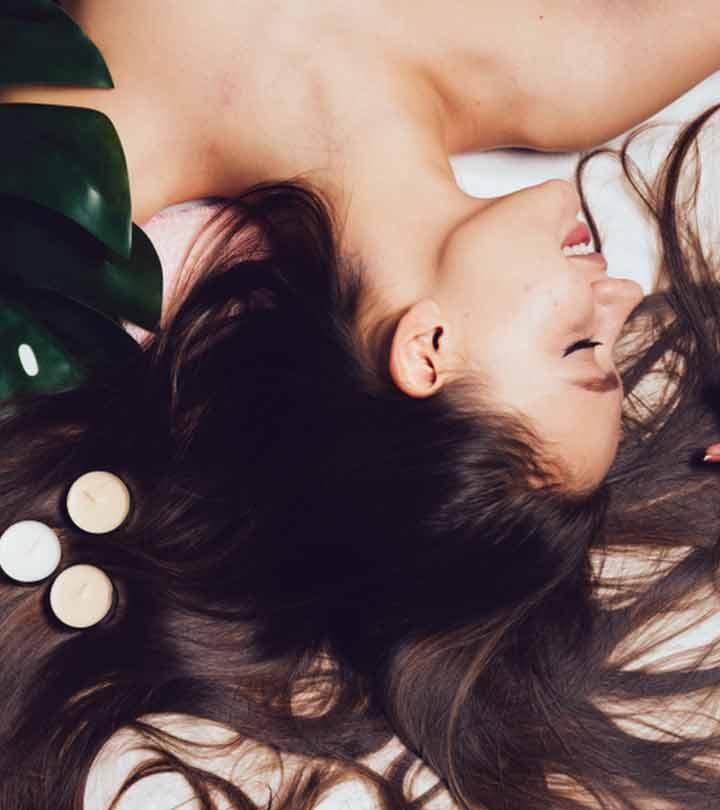

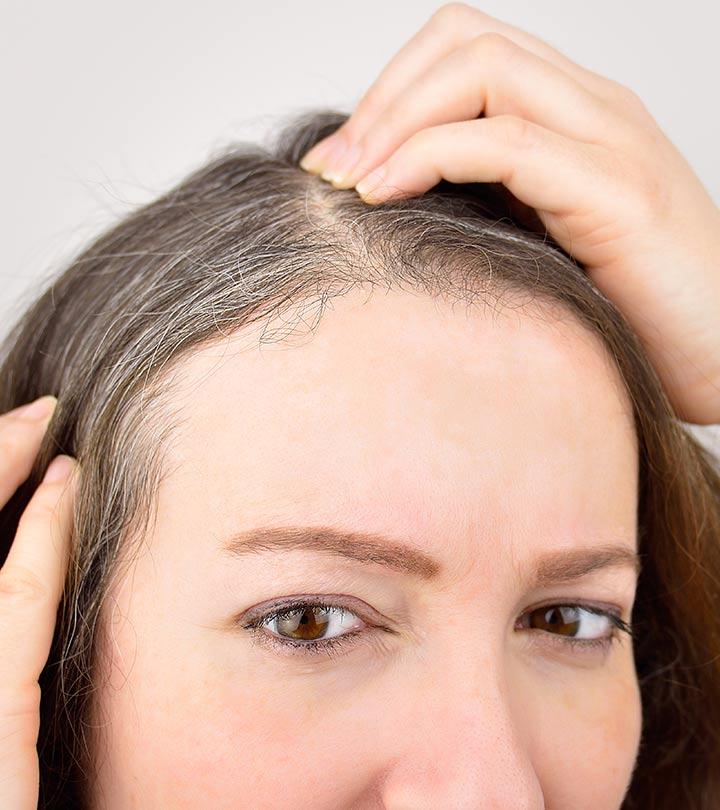
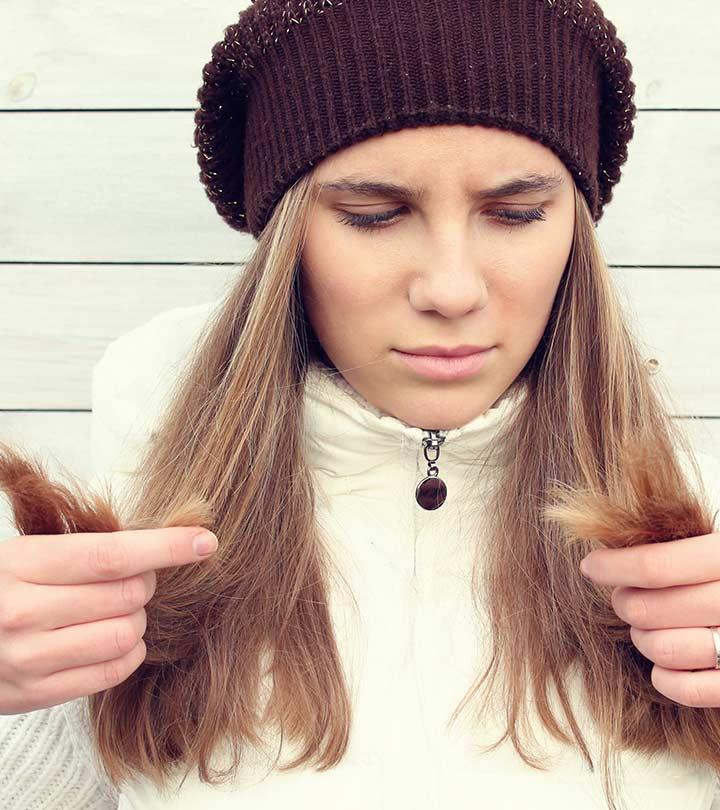
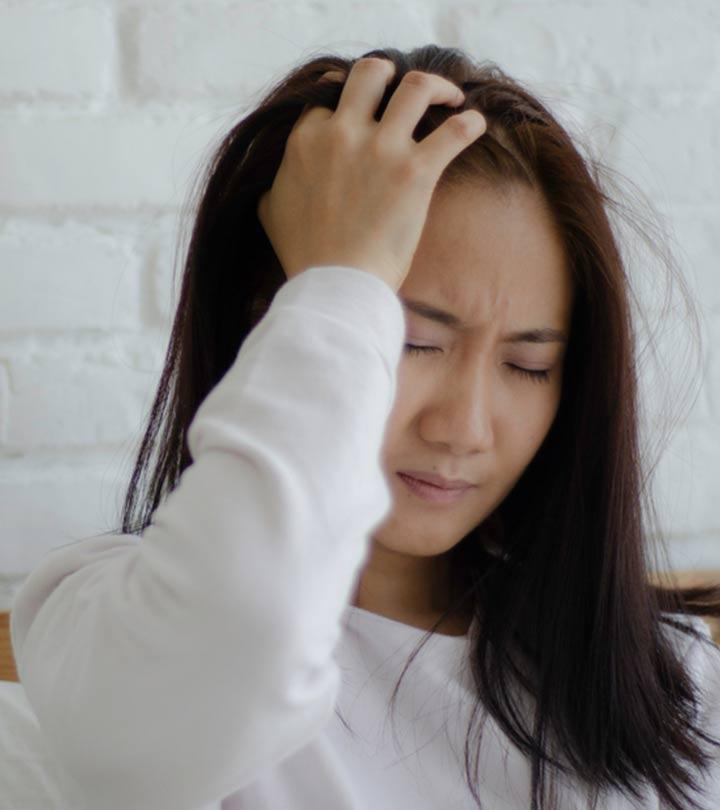
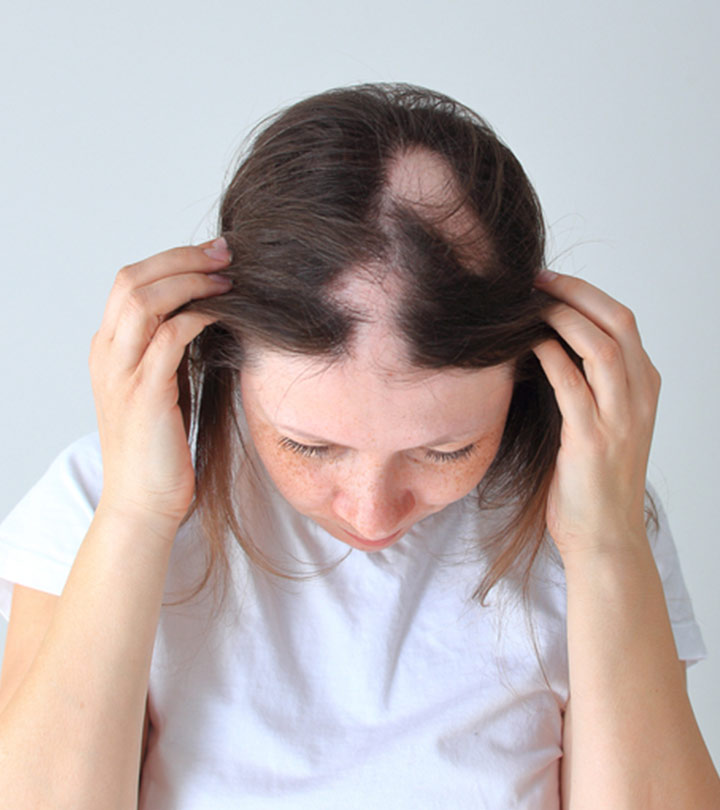
Community Experiences
Join the conversation and become a part of our empowering community! Share your stories, experiences, and insights to connect with other beauty, lifestyle, and health enthusiasts.